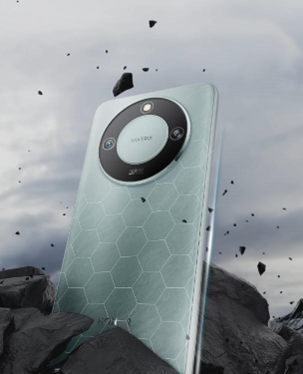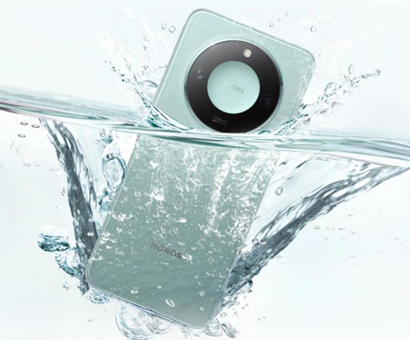Durability acts as an invisible shield, protecting your digital life through everyday chaos. While terms like “water-resistant” and “drop-proof” are often used in marketing, what they really offer is something simpler: peace of mind. It means your phone can survive a fall from your hand, resist a splash of rain, or withstand being tossed in a bag with keys and other items. True durability isn’t about passing extreme laboratory tests—it’s about surviving the real-world accidents we all face. This resilience comes from a blend of thoughtful engineering and strong materials designed to protect your device day after day. In this article, we’ll look at the key principles that make a phone durable and how these features help safeguard your investment.

Built to Last: How a Phone's Body Handles Drops
What Makes a Phone Survive Everyday Bumps and Falls
The survival of a phone during an accidental drop hinges on its structural integrity and material choice. Modern phones often use materials like aluminum alloys or reinforced polymers that are specifically chosen for their ability to absorb and dissipate kinetic energy. When your phone slips from your hand, its frame acts as the first line of defense, designed to deform slightly upon impact to cushion the internal components. This strategic absorption prevents the delicate circuit boards and batteries from experiencing the full force of the shock. A well-built phone feels substantial in the hand not because it is excessively heavy, but because its construction is solid and purpose-built to handle real-world stress.
How Good Design Spreads Out the Force of an Impact
Excellent design goes beyond strong materials by focusing on how to manage physical stress intelligently. Engineers use curved edges and rounded corners not only for aesthetics but because these shapes help to deflect impact energy away from the most critical areas. The goal is to prevent any single point from bearing the entire brunt of a fall, effectively spreading the force across the entire body. This principle is similar to an arch in architecture, which distributes weight to its supports. Internal reinforcement brackets and a well-secured battery ensure that components do not come loose and cause further damage upon impact. Ultimately, this thoughtful design approach means a minor accident is far less likely to result in a catastrophic failure.

Keeping Out the Elements: Water and Dust Defense
How Phones Are Sealed Against Rain and Spills
Protection against liquids is achieved through a meticulous system of seals, gaskets, and hydrophobic coatings. Tiny barriers are placed at every critical junction, including around buttons, speakers, and the charging port, to create a watertight internal chamber. These seals are made from specialized rubber or glue that remains flexible over time, ensuring the protection lasts throughout the phone's life. A common standard you might see is an IP rating, which certifies a device's level of resistance; for many everyday scenarios, a rating that protects against spills and rain is perfectly adequate. This engineering means you can answer a call in the rain or wipe off a coffee spill without fearing immediate damage to your device.
Why Keeping Dust Out Matters for Your Phone's Health
While water is an obvious threat, dust and fine sand are silent adversaries that can degrade your phone's functionality over time. These tiny particles are abrasive and can work their way into mechanical components like buttons or speakers, causing them to wear out or become stuck. Furthermore, dust can clog microphone and speaker grilles, muffling sound and reducing call clarity. It can also interfere with the cooling system, causing the phone to overheat during intensive tasks. A proper sealing strategy against dust is therefore essential for maintaining the phone's performance, battery health, and audio quality for years, not just months.
The Screen: Protecting Your Phone's Most Vulnerable Part
The display is your phone's window to the world and its most exposed component, making it highly susceptible to cracks and scratches. To combat this, manufacturers use chemically strengthened glass, a material that undergoes an ion-exchange process to create a compressive layer on its surface, making it incredibly hard to scratch and more resistant to bending forces. Many phones also apply an oleophobic coating to repel fingerprints and make the screen smoother to the touch. Beyond the glass itself, the way the screen is assembled matters; a design that sits flush with the frame or has a raised bezel can prevent the glass from making direct contact with a flat surface when dropped. Software also plays a role, with features like automatically lowering the brightness in direct sunlight to prevent overheating and potential long-term damage to the display.
Conclusion
Choosing a durable phone means finding one that offers real-world protection through smart engineering and rugged design—balancing everyday usability with proven resilience against life’s unexpected moments. A great example is the HONOR X9c Smart, which features advanced anti-drop protection certified for falls from up to 2 meters, along with a triple-layer waterproof design that guards against spills and splashes. With these built-in defenses, the phone stands up to daily demands effortlessly, letting you stay connected with confidence. It’s durability that works quietly in the background, turning your device into a trusted companion rather than a constant worry.
